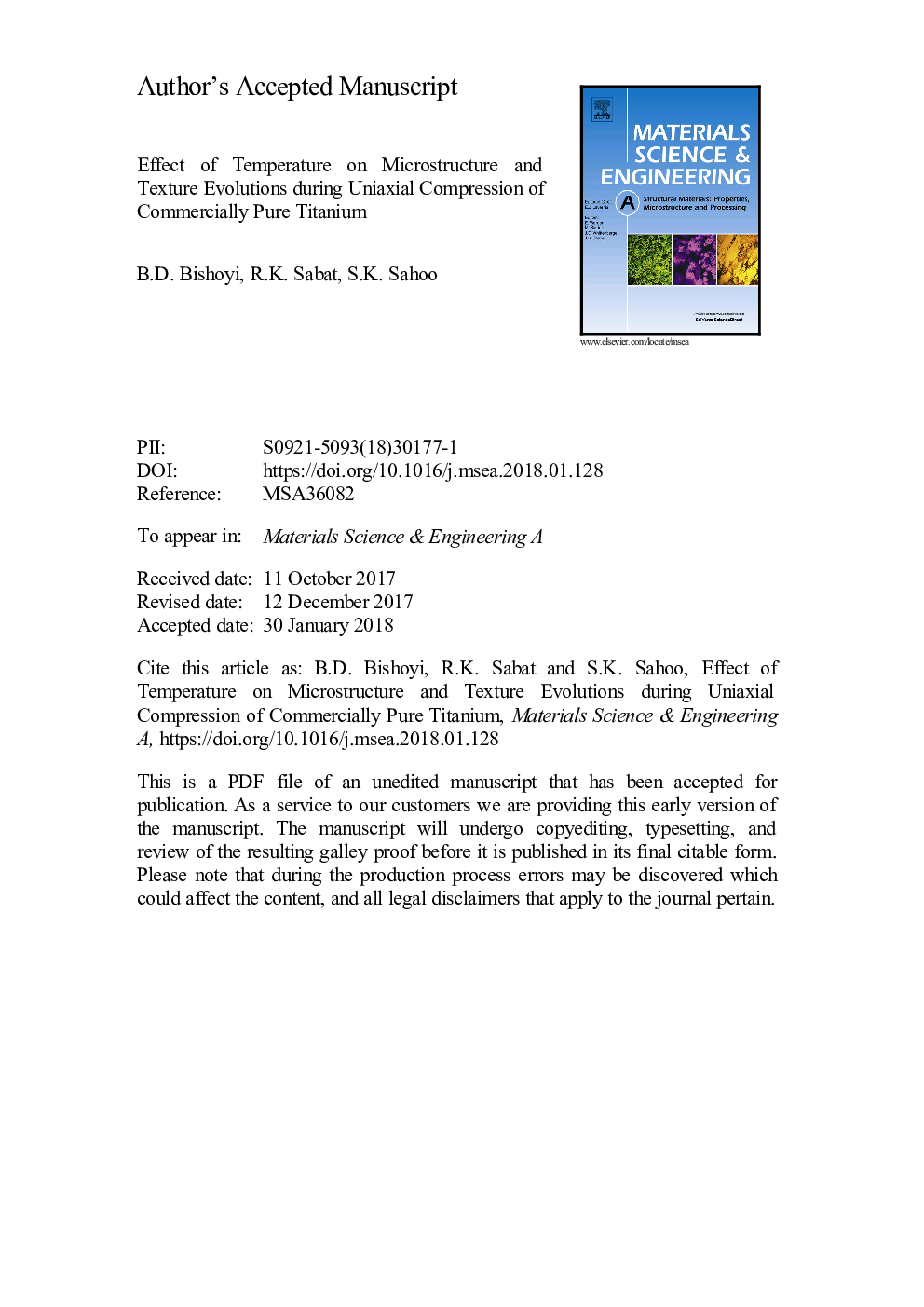| Article ID | Journal | Published Year | Pages | File Type |
|---|---|---|---|---|
| 7973278 | Materials Science and Engineering: A | 2018 | 31 Pages |
Abstract
Commercially pure (CP) titanium samples were subjected to uniaxial compression of 3%, 10%, 20%, 30%, 40% and 50% reductions at room temperature (298â¯K), 673â¯K and 873â¯K respectively. {101¯2} type tensile twins were observed during the deformation at temperatures of 298â¯K and 673â¯K only. Volume fraction of these twins was increased up to 20% reduction beyond which it was decreased on further increasing the % reduction. The non-basal orientations had higher Taylor factor values and were prone to twinning. On the other hand near-basal orientations were observed to be the possible twinning products. It was further observed that the volume fraction of dynamically recrystallized grains was increased with increase in % reductions at high temperatures. The initial non-basal texture of the samples was found to be transformed to dominant basal texture after deformation irrespective of the temperature of deformation. An abrupt transition of texture from non-basal to basal at a true strain of 0.22 of the samples deformed at a temperature of 873â¯K was observed and this may be attributed to the nucleation and growth of tensile twinning.
Keywords
Related Topics
Physical Sciences and Engineering
Materials Science
Materials Science (General)
Authors
B.D. Bishoyi, R.K. Sabat, S.K. Sahoo,
